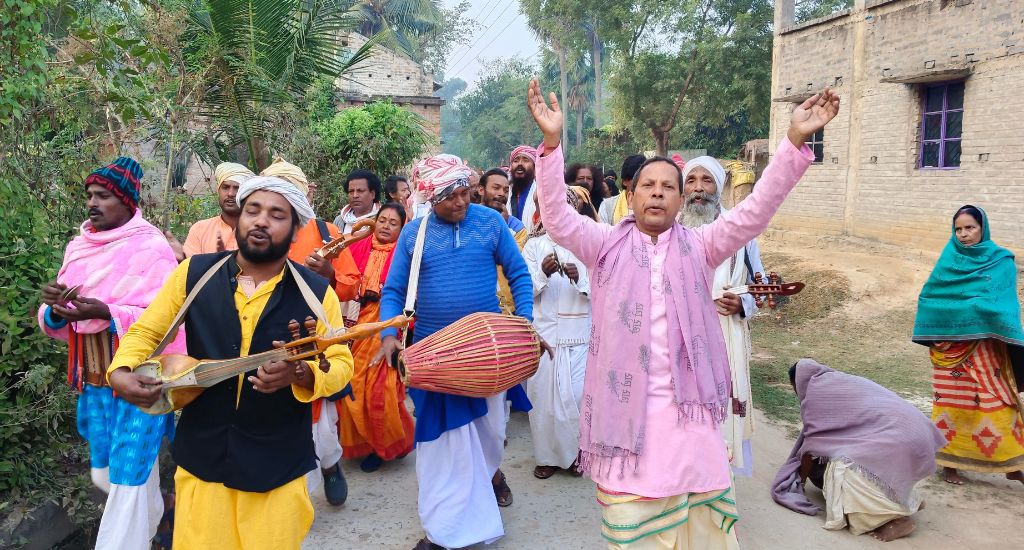
Universal Brotherhood: Baul festival of mystic minstrels enchants Bengal village
A three-day annual festival of Baul mystic minstrels enchants audiences with their songs of love and unity in the East Bardhaman district of West Bengal.

A three-day annual festival of Baul mystic minstrels enchants audiences with their songs of love and unity in the East Bardhaman district of West Bengal.
As the sun wakes up from its sleep, several saffron-clad men with long beards and big smiles criss-cross the lanes of villages in East Bardhaman, West Bengal. They are singing songs in praise of god. But not just any god. All the gods.
For these are Baul singers – mystic minstrels – who have no dogmas or scriptures. And their annual festival is underway.
Each morning of the three-day festival kicks off with the prabhat pheri, or early morning rounds, of processions of people chanting songs and playing musical instruments throughout the neighbouring villages, singing hymns about gods and goddesses.
Devotees fall on their feet to seek their blessings – regardless of their caste and religion – from the musical mystics.
The day continues with some lectures but mostly performances from a variety of singers and musicians – this year there was even a band from Russia who dazzled the crowd.
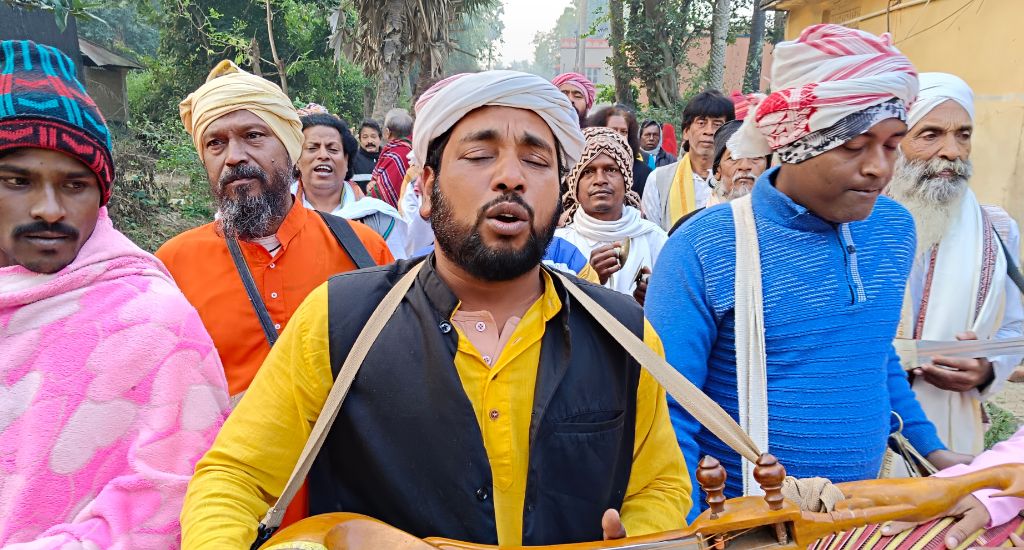
The Baul festival, which went on from 25-27 November, was held in Bannabagram village in East Bardhaman district of West Bengal, around 150 kilometres from Kolkata, the state capital.
Our existence isn’t exactly known but our presence has been found in Bengali texts of the 15th century
Bauls are members of a nonconformist Bengalese sect having gurus but no dogmas, rituals, religious institutions or scriptures. They believe in the equality of all religions – many are Hindus and Muslims, devotees of Lord Vishnu and Sufis, respectively. Most are musicians, often referred to as mystic minstrels, who sing and perform to promote unity and universal brotherhood and sisterhood.
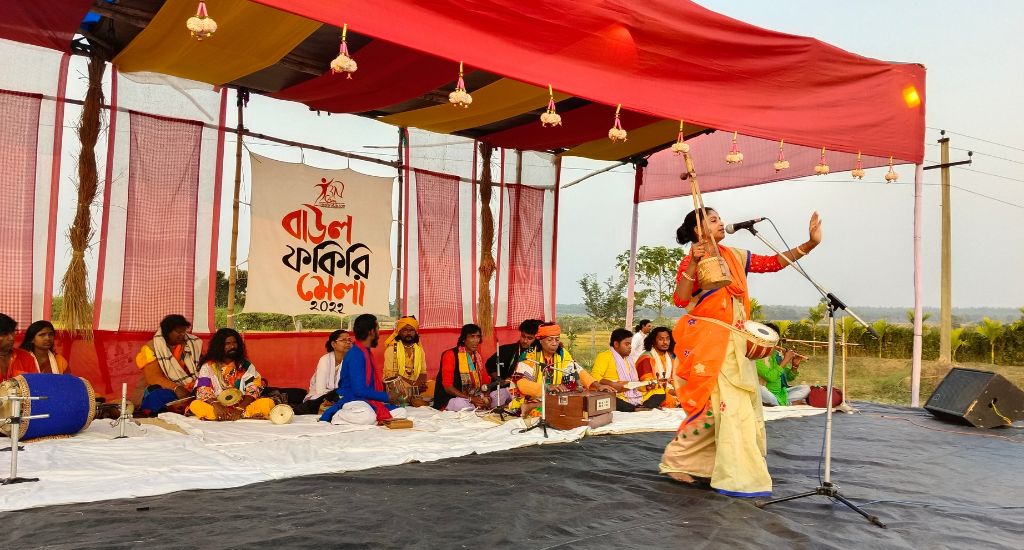
“Our existence isn’t exactly known but our presence is found in Bengali texts of the 15th century. References to us are also found in the Chaitanya Bhagavata of Vrindavana Dasa Thakura as well as in the Chaitanya Charitamrita of Krishnadasa Kaviraja,” said Khaibar Rahman Khan, 67, a Baul singer from Nadia district of West Bengal.
Around 3,000 Bauls live in West Bengal, mostly concentrated in the districts of Nadia, Murshidabad, Birbhum, Bankura and East Bardhaman.
Bauls usually dress in orange or saffron, showing their religious dedication. Men keep their hair long (often in a topknot), usually have beards and wear the alkhalla, a robe of coarse cloth, small bells at the ankles, and sometimes rudraksha beads (sacred to the god Shiva). Women wear simple white or saffron saris and no jewellery.
They can be married or live a celibate life as they wander from one place to another doing madhukari (seeking alms by singing) for a livelihood.
Apart from singing hymns from the religious scriptures, they also draw inspiration from everyday lives and try to create awareness among people on various social evils.
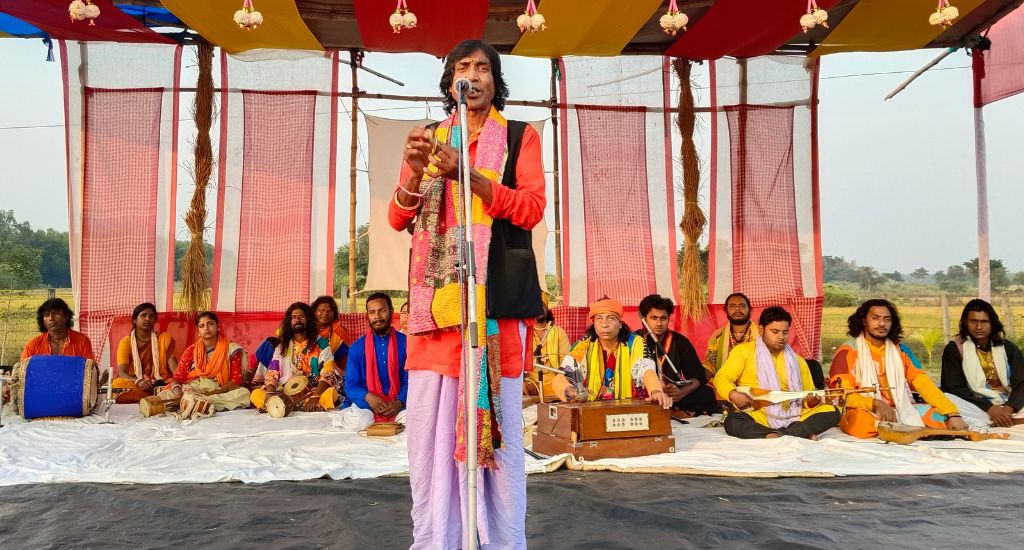
“Our lyrics are normally composed by mahajans that carry an overt as well as underlying meaning,” Khan said.
In 2004 they started working with Baul Sufis called fakirs in the Gorbhanga village of Nadia district. The first Baul festival was held there in 2010, supported by a European Union funded project, where Bauls united at one place in the spirit of “togetherness.”
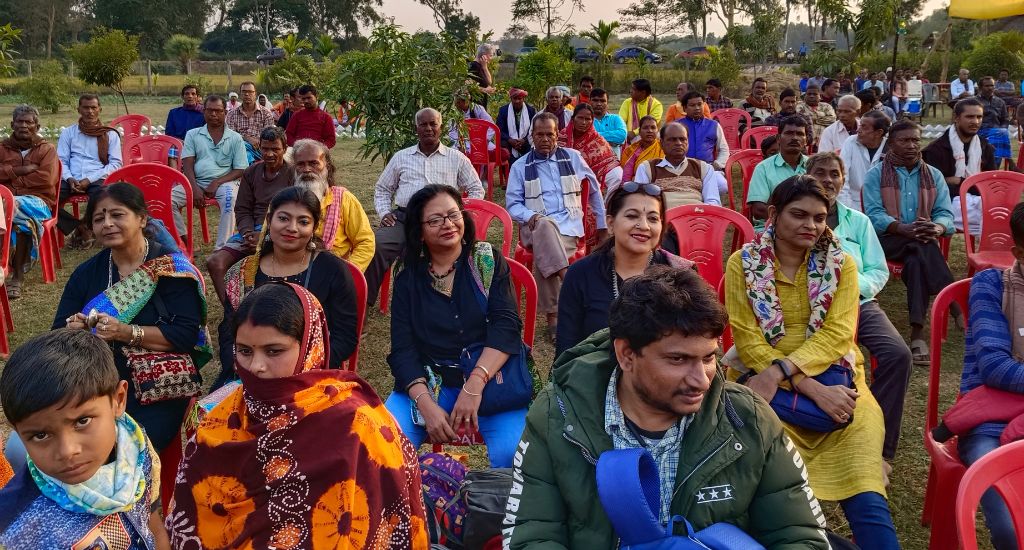
“We started organising the festival in different parts of Bengal since 2012 because our goal was to promote art, artists and the village,” pointed out Amitava Bhattacharya, founder director, Banglanatok.com, a social enterprise.
Bhattacharya wants to help the Bauls take the festival to the next level. He thinks they need help building capacity as a group – link them directly to the market interested in hearing them – as well as help them collaborate through exchange programmes.
Most of us do not have other sources of livelihood. We used to get at least 10-15 programmes every month during the winters – our season – but covid crushed us
“Direct market linkage was very important to bring them into limelight,” he told VillageSquare.in.
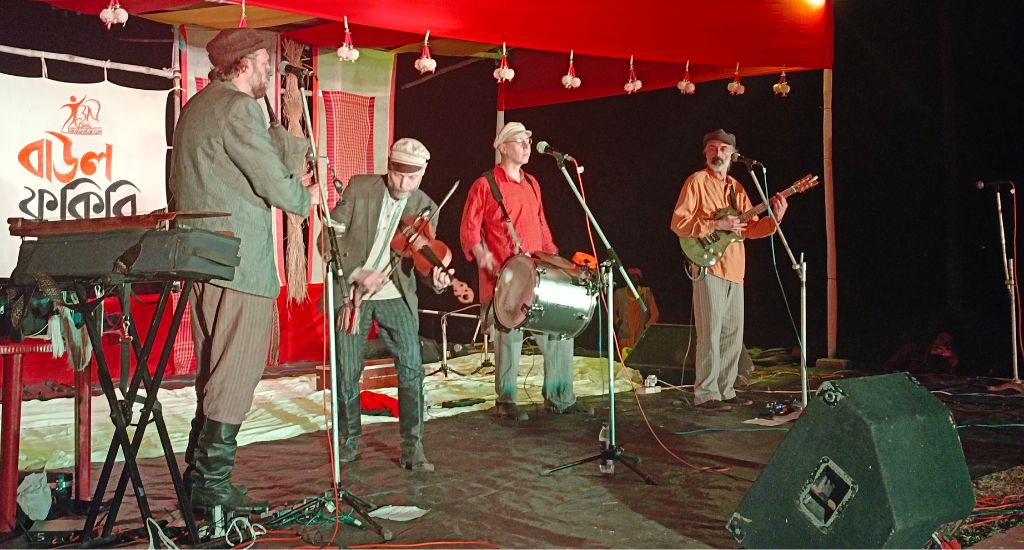
As a result of doing this, the Bauls started getting more stage performances than what they were getting in 2004. People began to visit their villages and learn more about them. But the pandemic hit them hard.
“Most of us do not have other sources of livelihood. We used to get at least 10-15 programmes every month during the winters – our season – but Covid crushed us completely pushing us to the brink of poverty,” pointed out Babu Fakir, 52, a Baul from Nadia district. Luckily people are now hungry for music and festivities.
Also Read | Baul singers take to digital performances during lockdown
“The market is now reviving. This festival will help them to get at least 20-30 more bookings,” Bhattacharya said.
The festival organisers even had the idea of inviting a Russian band to the festival – not just for the enjoyment of the guests, but to help the Bauls become aware of performances done on the international stage.
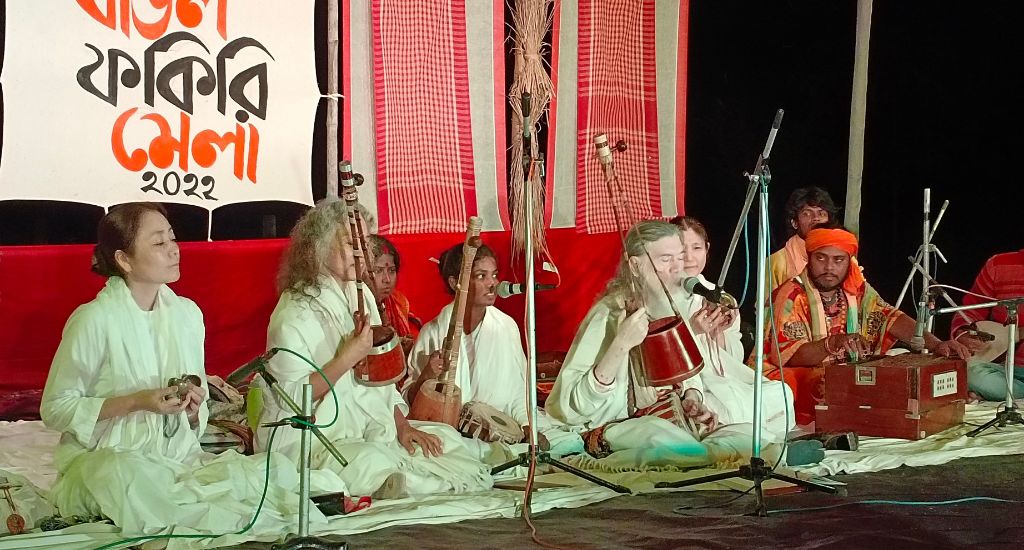
Alexey Belkin travelled several thousand miles with a pounding heart from his native country Russia to perform for the Baul enthusiasts who had never heard of him or his band Otava Yo.
The 48-year-old and his band have performed across the globe, but this was their first show to a crowd who knew nothing about them, or Russian music, never mind much other foreign music.
“Though we’re an eight-member band, the organisers told us to come with just four musicians as it was a festival in a remote village with a small crowd. Even we were apprehensive about performing as a foreign band in front of people that didn’t know about us,” Belkin said. But he was wrong.
A few minutes into the performance the audience started dancing and grooving to the beat of the Russian drums.
“It became a musical extravaganza. The Russian lyrics hardly bothered anyone as villagers danced to the tune of the music. It was a roaring success with the audience wanting us to keep going and keep going. Again, it proves that music has no barriers,” Belkin said.
While music knows no bounds, cultural appropriation of their long tradition is a worry. Some Bauls have noticed that young singers are tapping their rich legacy without understanding the history and spirituality behind their ballads.
“We are noticing some people are imitating our work by just hearing a few songs from YouTube and then giving stage performances,” said Kamanur Jaman Karikor, 44, a Baul singer.
The worry is not just cultural appropriation but misrepresentation.
“They don’t have enough talent and often deliver bad performances. This gives the misconception about Baul music and hampers our work,” Karikor said.
The lead image shows the prabhat pheri – procession of the minstrels walking through streets of a village – and singing (Photo by Gurvinder Singh)
Gurvinder Singh is a journalist based in Kolkata.